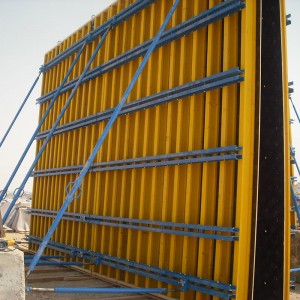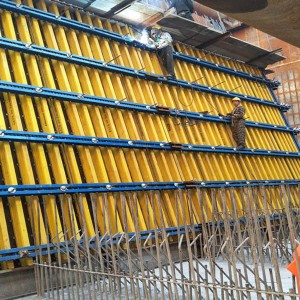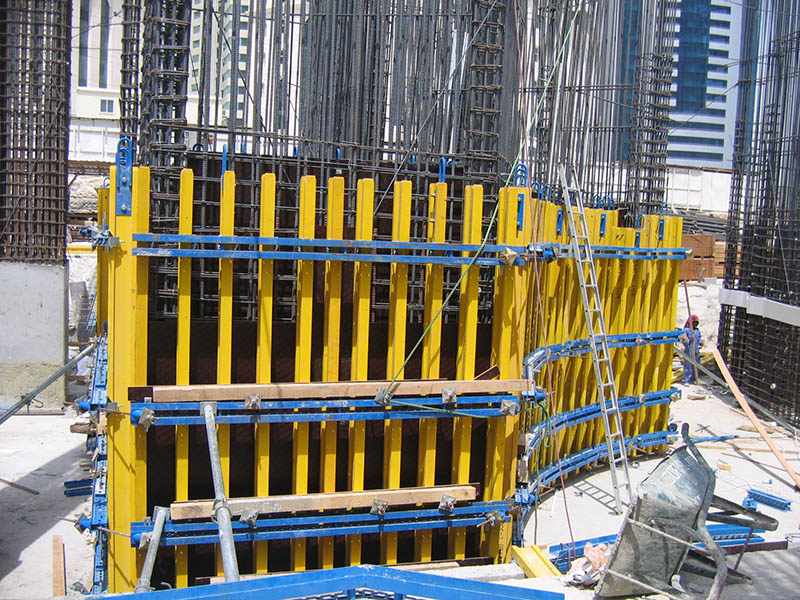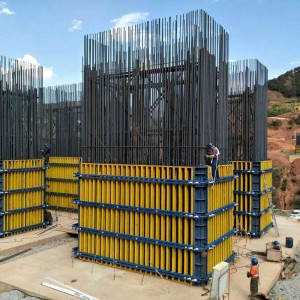Wall formwork consists of H20 timber beam, steel walings and other connecting parts. These components can be assembled formwork panels in different widths and heights, depending on the H20 beam length up to 6.0m.
Steel walings required are produced in accordance with specific project customized lengths. The longitudinally-shaped holes in the steel waling and waling connectors result in continuously variable tight connections (tension and compression). Every waling joint is tightly connected by means of a waling connector and four wedge pins.
Panel struts (also called Push-pull prop) are mounted on the steel waling, helping formwork panels erection. The length of panel struts are selected according to the height of the formwork panels.
Using the top console bracket, working and concreting platforms are mounted to the wall formwork. This consists of: top console bracket, planks, steel pipes and pipe couplers.












